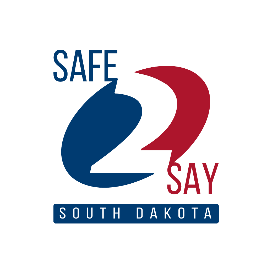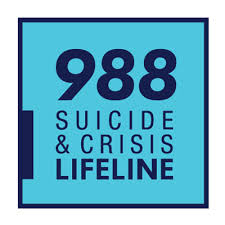Quick Resources

Kyle Webb High School Counselor

Teresa Barnaud Middle School Counselor

Alia Brennan Elementary Counselor

Brian Aspen Social Work

Broncs
Our Belle Fourche School Counseling Program and Staff
The Belle Fourche School District's Mental Health & Wellness website is designed to provide a wide variety of educational and community resources available to students, staff, and the community to support positive change, reduce stigma and develop the capacity of all stakeholders to engage in wellness.
The Belle Fourche School District is committed to promoting psychological health and well-being. Psychological health affects how we think, feel, and act. It also helps determine how we manage stress, relate to others, and make everyday choices. Social and emotional well-being is essential at every stage of life, from childhood and adolescence through adulthood. Proper psychological health involves a person's normal emotional, behavioral, and social maturity. This means such a person is in a healthy state of mental well-being, which they can use to function normally in society and during everyday events. http://www.mentalhealth.gov/
Psychological health is a spectrum. In the same way that every individual experiences physical health as a continuum from 'well' to 'ill,' every individual has a mental health experience. As with physical health, mental health changes at different points in individuals' lives based on biological and environmental factors. Nevertheless, many young people enjoy mental wellness, meaning that they have positive regard for themselves, want positive relationships with the people important to them, and are resilient when faced with challenges in their lives at home and school.
Coping with mental health concerns negatively impacts young people's ability to meet the many demands of school, including cognitive demands for learning; social and emotional needs for making friends and behaving according to school rules, norms, and expectations; and physical demands for being active throughout the school day. A state of mental, emotional, and psychological health can impact perceptions, choices, and actions that significantly impact overall wellness and daily functioning, including academic performance. Mental health conditions include depression, anxiety disorders, post-traumatic stress disorder (PTSD), and substance use disorders. Mental health can be impacted by the home and social environment, early childhood adversity or trauma, physical health, and genes.
Our Program and Staff
The goal of the Belle Fourche School Counseling Program is to work collaboratively with administrators, teachers, parents, and partners to aid in each student's academic, career, and social/emotional growth while promoting lifelong learning experiences. The following information's primary purpose is to protect all students' health and well-being.
Mr. Kyle Webb, (605) 723-3350 Ext. 4421
Hello, my name is Kyle Webb, and I am your high school counselor. I was born and raised in Belle Fourche, and after graduating high school, I attended South Dakota State University, where I earned my undergraduate degree in History Education. My journey as an educator began in Fort Pierre, South Dakota, where I spent two years teaching and coaching basketball. In 2015, I returned to my hometown, where I taught social studies for nine years and continued coaching basketball. I am completing my Masters in School Counseling through Chadron State College. I am blessed with a beautiful family—my wife, Kaylee, and our two wonderful children: Taytum, our four-year-old daughter, and Kyler, our two-year-old son. In my free time, I enjoy hunting, fishing, and exploring the great outdoors.
Becoming a school counselor has been a fulfilling transition for me. My passion for working with youth and helping them navigate life’s challenges inspired me to pursue this career. I feel fortunate to serve in a community I’ve always called home, and I am committed to supporting the success and well-being of every student at our school.
I look forward to working with you and your family.
Mrs. Teresa Barnaud, (605) 723-3367 Ext. 1211
Bio coming soon.
Ms. Alia Brennan (605) 723- 3382 Ext. 3223
My name is Alia Brennan, and I am your K-4 school counselor! I was born and raised in Chadron, Nebraska. I attended Chadron State College and received my Bachelor of Arts degree in May of 2017 while playing four years of collegiate volleyball for the Eagles. I then enrolled in the Master's programs at Chadron State College in the Fall of 2017, and in December of 2019, I graduated with my Master of Arts in Education for school counseling. After taking a year to work from home, I decided to enter my degree field. I have always been in awe of the Black Hills and its recreational activities, which prompted me to move my job search to this area. I am so genuinely fortunate to have begun my professional career in a small town and school district with employees that are so gracious, and I love the ability to get to know the student population on a first-name basis.
Our young people spend a significant amount of time in schools; therefore, there should be spaces where they feel safe to foster the best learning environment. This motivation behind becoming a school counselor combined my passion for mental health and education.
Brian Aspen (605) 723- 3382
My name is Brian Aspen, and I have been the school social worker and family liaison for the Belle Fourche School District. My role is to help our school district enhance its ability to meet its academic mission, especially where home, school, and community collaboration is the key to achieving student success.
School District Mission Statement
We, the members of the Belle Fourche community, are committed to building a learning community and ensuring all learners have equal access to an excellent education program that results in learners who are responsible and accountable; who value lifelong learning and ability to learn; and who can succeed in a changing society.
District Goal Statements
Build a quality educational program that is efficient, effective, and excellent.
Improve and develop a cooperative and positive image for the school system.
Provide financial resources to fund the educational programs.
Conduct school district business in a professional, effective efficient, and responsible manner.
Counseling
When someone experiences emotional difficulty, it may affect their general daily functioning. For students, this is often evident in academics. Frequently school-related problems may be symptomatic of those troubles. School-based counselors can assist families in connecting to community mental health resources.
Student's Right to Privacy and Confidentiality
A student's right to privacy and confidentiality is the basis for an effective counseling relationship. Confidentiality ensures that school counselors won't share students' disclosures with others except when the student authorizes it or when there is a clear and present danger to the student and other persons.
A school counselor in a counseling relationship with a student has an ethical and legal obligation to keep the information within that relationship. Confidentiality is the ethical and legal term ascribed to the information communicated within the counseling relationship, and it must be maintained unless keeping that confidential information leads to foreseeable harm. "Serious and foreseeable harm is different for each minor in the school setting and is determined by students' developmental and chronological age, the setting, parental rights, and the nature of the harm."
Exceptions to confidentiality exist, and students should be informed when situations arise. School counselors are responsible for disclosing information obtained in counseling relationships to protect students, themselves, or other individuals. Privileged communication between a school counselor and a student is a legal term granting protection to information shared in a counseling relationship only if said privilege is granted by federal or state statute. If privilege applies, it can provide additional safeguards to confidential information.
Confidentiality is essential to earn a student's trust and promote honest and authentic disclosure.
School Counselors
Counseling and guidance programs have undergone an evolution over several decades and are critical to helping prepare students to meet future challenges. The Belle Fourche School District school counselors promote all students' academic, college, and career readiness and social/emotional development.
Classroom Guidance Lessons: Helps students understand themselves and others. School counselors help students develop peer relationships, adequate social, decision-making, study skills, effective communications, conflict resolution, coping strategies, and more through classroom guidance.
Individual Student Planning: Helps students set goals, establish academic and career plans, understand their strengths and weaknesses, and prepare for the transition to the next stage of their life.
Responsive Services: Assists students with needs such as adjusting to a new school, coping with grief following a crisis, and dealing with substance abuse or other risky behaviors. These services are provided through individual and small group counseling, peer facilitation and consultation, and referrals to professionals trained in mental health, welfare, and other specialties.
System Support: Enhances school climate and relationships among school community members: school Counselors coordinate parent outreach services, community support services, and other faculty and staff consultations.
Career Counseling: Several factors influence your career development, including your interests, abilities, values, personality, background, and circumstances. Career Counseling is a process that will help you know and understand yourself and the world of work to make career, educational, and life decisions. School counselors deliver programs that impact student growth in three domains: career development, academic development, and social/emotional development.
School counselors recognize that students should demonstrate growth in these domains equally to succeed. School counselors understand that these domains are not considered separate but are intertwined, affecting the other. Although this statement focuses on career development, it is understood that academic growth and social/emotional development must be considered equally.
Career development is more than just deciding on a major and what job you want to get when graduating from high school. Instead, it is a lifelong process, meaning that throughout your life, you will change, situations will change, and you will continually have to make career and life decisions.
Career Counseling aims to help you make the decisions you need to make now and give you the knowledge and skills you need to make future career and life decisions.
The School Counselor's Role: School counselors play a critical role in students' career development by Introducing careers and the world of work beginning in lower elementary grades and providing opportunities to engage students in life roles, including learner and worker.
Providing learning and experiential opportunities for students to acquire behaviors and skills for career readiness. The primary focus of career counseling is as follows:
*Working with students to identify their interests, abilities, specific career clusters, and postsecondary plans (many states mandate an academic/career action plan as a graduation requirement
*Helping students understand the connection between school and the world of work
*Helping students plan the transition from school to postsecondary education and the world of work
*Advising students on multiple postsecondary pathways (e.g., college, career-specific credentials and certifications, apprenticeships, military, service-year programs, full-time employment with a family-supporting wage).
*Connecting students to early college programs (e.g., dual credit/dual enrollment).
*Collaborating with administration, teachers, staff, and decision-makers to create a postsecondary-readiness and college-going culture
Providing and advocating for individual pre-K through postsecondary students' college and career awareness through exploration and postsecondary planning and decision making, which supports students' right to choose from the vast array of options after completing secondary education
Providing opportunities for all students to develop the mindsets and behaviors necessary to learn work-related skills, resilience, perseverance, an understanding of lifelong learning as a part of long-term career success, a positive attitude toward learning, and a strong work ethic. In addition, recognizing and supporting essential developmental factors, such as self-efficacy and identity, motivation, and perseverance, are key to future successes.
School Social Workers
School social workers bring unique knowledge and skills to the school system and the student services team. School Social Workers can assist with mental health concerns, behavioral concerns, positive behavioral support, academic and classroom support, consultation with teachers, parents, and administrators, and provide individual and group counseling/therapy. School social workers are instrumental in furthering the mission of the schools, which is to provide a setting for teaching, learning, and attaining competence and confidence. School social workers are often called on to help students, families, and teachers address problems such as truancy, social withdrawal, overaggressive behaviors, rebelliousness, and unique physical, emotional, or economic effects, including neglect and abuse.
School-Based Mental Health Counselors, Clinical Psychologists, and Referrals
When a student experiences emotional difficulty that limits the student's ability to participate in the education process, the student may benefit from counseling to overcome the problem. Counseling typically requires that the student discuss their feelings and follow a train of thought to make connections regarding coping strategies. When a student is not making progress expected from school-level counseling or the student's difficulty is beyond what is typically provided by school-level counselors, the student may be referred for counseling by a district mental health counselor. Referrals verify that less intensive counseling services have been exhausted or would be inappropriate. The district mental health counselor collaborates on an "as needed" basis with the student's support network (school, home, community). When the student has made sufficient and consistent progress, the more intensive support is faded back to the school level. If you have already spoken to your child's school and have further questions about school-based mental health counseling, don't hesitate to get in touch with your student's school counselor
School Psychologists
School psychologists are uniquely qualified members of school teams that support students' ability to learn and teachers' ability to teach. They apply expertise in mental health, learning, and behavior, to help children and youth succeed academically, socially, behaviorally, and emotionally. In addition, school psychologists' partner with families, teachers, school administrators, and other professionals to create safe, healthy, and supportive learning environments that strengthen connections between home, school, and the community.
School psychologists provide direct support and interventions to students, consult with teachers, families, and other school-employed mental health professionals (i.e., school counselors, school social workers to improve support strategies, work with school administrators to improve school-wide practices and policies, and collaborate with community providers to coordinate needed services. They help schools successfully:
*Improve Academic Achievement
*Promote Positive Behavior and Mental Health
*Support Diverse Learners
*Strengthen Family-School Partnerships
*Improve School-Wide Assessment and Accountability
*Monitor Individual Student Progress in Academics and Behavior
Facts About Mental Health
*Mental health affects everyone regardless of culture, race, ethnicity, or gender
*Forty-four million adults experience mental health illness each year
*One in five children ages 13 – 18 have or will have a severe mental health illness
*Things Parents can do When Concerned About Mental Health
*Talk with your child's pediatrician
*Get a referral to a mental health professional
*Learn more about mental health disorders
*Work with the school
*Connect with other individuals and families
Belle Fourche, SD Community Resources
*Belle Fourche Counseling, LLC, 515 National St #103, Belle Fourche, SD 57717 / Phone: (605) 722-8090
*Black Hills Psychology, 115 N 7th St #6, Spearfish, SD 57783 / Phone: (605) 645-0100
*Behavior Management Systems, 623 Dahl Rd, Spearfish, SD 57783 / Phone: (605) 642-2777
*Spearfish Counseling Services, Address: 1320 North Ave, Spearfish, SD 57783 / Phone: (605) 644-7494
*Monument Health Behavioral Health Center, Address: 915 Mountain View Rd, Rapid City, SD 57702
Phone: (605) 755-7200
*MANLOVE PSYCHIATRIC GROUP, P.C., 636 Saint Anne St., Rapid City, SD 57701-4694 / Phone: (605) 348-8000
Physical and Mental Health Correlation
Registered, professional school nurses serve a vital role in promoting positive mental health outcomes in students. Positive mental health is as critical to academic success as physical well-being. As members of interdisciplinary teams, school nurses collaborate with school personnel, community healthcare professionals, students, and families in the assessment, identification, intervention, referral, and follow-up of children in need of mental health services. Because of their regular access to students, school nurses are uniquely qualified to identify students with potential mental health concerns.
Schools and school nurses have an essential role in addressing mental health concerns, promoting mental health wellness and social-emotional competencies, enhancing protective factors, and referring to and collaborating with mental health providers.
School nurses are uniquely positioned to play an active role in mental wellness promotion and early intervention programs. The CDC notes that schools are among the most efficient systems for reaching children and youth to provide health services and programs. School nurses are educated to identify somatic complaints and co-occurring behavioral health concerns. Thus, school nurses are often a student’s first point of entry into mental health services. School nurses are also part of the regular school experience and are easily accessible to students seeking assistance with mental health issues.
As integral members of school mental health service teams, school nurses are familiar with and educated to recognize warning signs such as changes in school performance, mood changes, complaints of illness before or during the school day, problems at home, and self-harm.
School nurses promote student success by implementing Section 504 plans and the health-related areas of the Special Education Individual Education Program (IEP). With these plans in place, the school nurse can assist students in re-entry into the school environment following homebound instruction or hospitalization.
Telehealth Counseling
Telehealth is the use of digital information and communication technologies, such as computers and mobile devices, to access counseling and health care services remotely and manage your health care. These may be technologies you use from home or that your counselor or doctor uses to improve or support health care services.
Child Abuse
Child abuse and neglect occur when a child is mistreated, resulting in injury or risk of harm. Types of child abuse and neglect are identified within four categories. The definitions include a summary of indicators to explain the meaning. None of the indicators alone are definitive of child abuse. It is necessary to look at the family's total functioning to determine present and impending danger.
Physical Abuse
Physical abuse refers to an action of the parent, guardian, or custodian that is non-accidental and results in physical injuries, often occurring in the name of discipline or punishment.
*Bruises and Welts
*On the face, lips, mouth
*On the torso, back, buttocks, thighs
*In various stages of healing
*Clustered, forming a regular pattern
*Reflecting the shape of the article used to inflict, electric cord or belt buckle
*On several different surface areas, they regularly appear after an absence, on weekends, or on vacation
*Subdural hemorrhage or hematomas
*Internal injuries
*Brain damage
*Burns
*Cigar, cigarette burns, especially on soles, palms, back, or buttocks
*Immersion burns sock-like, glove-like, doughnut-shaped on buttocks or genitalia, patterned like an electric burner, iron
*Rope burns on arms, legs, neck, or torso
*Fractures
*The skull, nose, and facial structure in various stages of healing
*Multiple or spiral fractures
bone fracture-unexplained and in various stages of healing
*Lacerations or Abrasions
*To mouth, lips, gums, eyes
*To external genitalia
*Behavioral Indicators
*Behavioral extremes; aggressiveness or withdrawal
*Frightened parents
*Afraid to go home
*Reports injury by parents
*Physical Neglect
*Physical neglect occurs when a parent, guardian, or custodian fails to provide for a child's basic needs, like food, clothing, shelter, education, medical care or supervision, and abandonment. The failure to meet basic needs must represent a threat to the child's immediate health and safety or an impending danger if a pattern or history of the child's needs is not being met.
Physical Indicators
*The child is malnourished, emaciated, hungry, begging for food, or seldom fed nutritious food. A medical diagnosis is usually necessary to determine malnutrition.
*The child's clothing is inappropriate or insufficient to protect the child from the weather, or the dress is so dirty or smelly that it constitutes a health hazard.
*The caretakers fail to provide a home, or the house is in a condition that presents a health hazard or dangers such as fire.
*The caretakers refuse to permit a child to attend school. Truancy alone does not constitute child abuse or neglect but may be an indication when considered with other family factors.
*The caretakers fail to seek medical or dental treatment for a health problem or condition that, if untreated, could represent a danger to the child.
*The caretakers fail to provide supervision of a child. The child's age and competence, amount of time left unsupervised, time of day the child is unsupervised, and degree of parental planning for the unsupervised period must be considered. In addition, community standards need to be considered when making judgments concerning lack of supervision.
*The child is abandoned. Abandonment is a legal term meaning contact with the child has not been attempted by the caretaker for an extended time.
Behavioral Indicators
*Begging, stealing food
*Extended stays at school; early arrival and late departure
*Constant fatigue, listlessness, or falling asleep in class
*States there is no caretaker
Sexual Abuse
Sexual abuse and exploitation occur when a parent, guardian, or custodian commits or allows contact or interactions between a child and adult. The child is used for the sexual stimulation of the parent, guardian, caretaker, or another responsible person. Sexual abuse may also be committed by a person under eighteen when that person is significantly older than the victim or in a position of power and control over the child.
Physical Indicators
*Difficulty walking or sitting
*Pain or itching in the genital area
*Bruises or bleeding in external genitalia, vaginal or anal areas
*Venereal disease, especially in pre-teens
*Pregnancy
*Self-harm
Behavioral Indicators
*Unwilling to change to the gym or participate in a physical education class
*Withdrawal, fantasy or bizarre, sophisticated, or unusual sexual behavior or knowledge
*Poor peer relationships
*Delinquent or runaway behavior
*Reports sexual assault by a caretaker
Emotional Abuse
Emotional maltreatment occurs when a parent, guardian, or custodian fails to provide the emotional nurturing needed for a child's psychological growth and development or willfully denies the child the emotional stability necessary for proper psychological growth and development. Emotional maltreatment results in an observable or measurable impairment of the child.
Physical Indicators
*Failure to thrive is diagnosed. The child does not gain weight or meet developmental norms, despite adequate feedings and the absence of physiological causes. Failure to thrive is caused by failure to emotionally nurture, cuddle and hold the child, such as leaving the child in a crib all day. The clearest indicator of failure to thrive is the placement of a child in another environment, where the child dramatically gains weight and thrives.
*The caretaker verbally abuses the child, such as constant harassment, belittling, humiliation, repeated threats, or constant criticism.
*The caretaker condones, suggests, or encourages the child to commit theft or prostitution.
*The child is ignored or isolated by parents physically and emotionally for prolonged periods. An example includes a child sent to an empty room for hours or days to be separated from the rest of the family.
*The child is placed in a position of acting as a parent to a significantly needed or inadequate parent
*Intentional infliction of physical or mental injury upon a child; a deliberate act that could reasonably be expected to result in physical or psychological harm to a child; or active encouragement of any person to commit an act that results or could reasonably be expected to result in physical or mental injury to a child.
If you suspect or know of a child or vulnerable adult in immediate danger, call 911
Any person who knows, or has reasonable cause to suspect, that a child is abused, abandoned, or neglected by a parent, legal custodian, caregiver, or another person responsible for the child's welfare is a mandatory reporter.
Be prepared to provide the following information:
*Reporter name (this is required for professionally mandated reporters)
*Victim name, possible responsible person, or alleged perpetrator name(s)
*Complete addresses for subjects, including a numbered street address, apartment or lot number, city, state, and zip code, and directions to their location
*Telephone numbers, including area code
*Estimated or actual dates of birth
*Social Security numbers, if available
*A brief yet concise description of the abuse, neglect, abandonment, or exploitation, including physical, mental, or sexual injuries.
*Names of other residents and their relationship to the victim(s), if available
*A brief description of the victim's disability or infirmity (required for vulnerable adults)
*The relationship of the alleged perpetrator to the victim
What Is Psychological Trauma?
Psychological trauma is a type of damage to the mind that occurs due to a severely distressing event. Trauma is often the result of an overwhelming amount of stress that exceeds one's ability to cope or integrate the emotions involved with that experience. A traumatic event involves one's experience or repeating events of being overwhelmed that can be precipitated in weeks, years, or even decades as the person struggles to cope with the immediate circumstances, eventually leading to serious, long-term negative consequences.
How Does Trauma Affect Students?
The effects of trauma on students are far more pervasive than adults imagine. For example, the National Survey of Children's Exposure to Violence found that over 60% of children surveyed experienced trauma, crime, or abuse in the prior year, with some experiencing multiple traumas. Often, children and adolescents do not have the necessary coping skills to manage the impact of stressful or traumatic events. As such, as many as one in three students who experience a traumatic event might exhibit symptoms of post-traumatic stress disorder (PTSD). In addition, following a child's exposure to a traumatic event, parents and teachers are likely to observe the following symptoms:
Reexperiencing — constantly thinking about the event, replaying it over in their minds, nightmares.
Avoidance — consciously trying to avoid engagement, trying not to think about the event.
Negative Cognitions and Mood — blaming others or self, diminished interest in pleasurable activities, inability to remember key aspects of the event.
Arousal — being on edge, being on the lookout, constantly being worried.
From http://traumaawareschools.org/impact
Situations That Can Traumatize a Child
*Physical or sexual abuse
*Abandonment, betrayal of trust (such as abuse by a caregiver), or neglect
*The death or loss of a loved one
*Life-threatening illness in a caregiver
*Automobile accidents or other serious accidents
*Witnessing domestic violence
*Bullying
*Life-threatening health situations and/or painful medical procedures
*Witnessing or experiencing community violence (e.g., drive-by shooting, fight at school, robbery)
*Witnessing police activity or having a close relative incarcerated
*Life-threatening natural disasters
*Acts or threats of terrorism
Self-Harm
Student Behavior that is self-directed and deliberately results in injury or the potential for injury to oneself. Self-harm behaviors can be either non-suicidal or suicidal. Although non-suicidal self-injury lacks suicidal intent, youth who engage in self-harm should receive mental health care. Treatment can improve coping strategies to lower the urge to self-harm and reduce the long-term risk of a future suicide attempt.
Resilience and Recovery
Some children, if given support, will recover within a few weeks or months from the fear and anxiety caused by a traumatic experience. However, some children need more help over a more extended period to heal and may need continuing support from family, teachers, or mental health professionals. In addition, anniversaries of the event or media reports may remind the child, causing a recurrence of symptoms, feelings, and behaviors.
Children exposed to violence often need adult support to learn how to de-escalate to manage emotions and behavior. In addition, they need encouragement to interact with peers in a mutually satisfying manner.
A healthy relationship with emotionally available caregivers helps children acquire the resilience they need to overcome the effects of trauma.
Suicide Prevention
Suicide risk is dynamic and exists on a continuum with various levels of risk. Each level of risk requires a different level of response and intervention by the school and the district. A student who is defined as high-risk for suicide is one who has made a suicide attempt, has the intent to die by suicide, or has displayed a notable change in behavior suggesting the onset of potential mental health conditions or deterioration of mental health. The student may have thoughts about suicide, including potential means of death, and may have a plan. In addition, the student may exhibit behaviors or feelings of isolation, hopelessness, helplessness, and the inability to tolerate any more pain. This situation would necessitate a referral, as documented in the following procedures. The type of referral, and its level of urgency, shall be determined by the student’s level of risk — according to local district policy.
Suicidal thoughts or behaviors are both damaging and dangerous. Someone experiencing these thoughts should seek immediate assistance from a health or mental health care provider. Having suicidal thoughts does not mean someone is weak or flawed.
If you or someone you know is in an emergency, *Call 211
*Text 605Strong to 898211 Visit: 605strong.com
*Call 1-800-273-8255 Visit: suicidepreventionlifeline.org
*Visit: suicidepreventionlifeline.org
*Text icare to 898211
*Visit: dss.sd.gov/behavioralhealth/
The Risk Factors for Suicide
Risk factors are characteristics or conditions that increase the chance that a person may try to attempt suicide. Suicide risk tends to be the highest when someone has several risk factors at the same time or has long-standing risk factors and experiences a sudden or devastating setback. These factors interact, and the more there are and the more they intensify, the greater the risk.
Know the Warning Signs
*Threats or comments about killing themselves, also known as suicidal ideation, can begin with harmless thoughts like "I wish I wasn't here" but can become more overt and dangerous
*Major depression (feeling down, withdrawn, or agitated in a way that impacts daily life)
*Hopelessness
*Isolation
*Bipolar disorder
*Post-traumatic stress disorder
*Eating disorders
*Increased alcohol and drug use
*Problems with impulse control and aggression
*Serious medical condition and/or pain
*Personality traits that create a pattern of intense, unstable relationships, or trouble with the law
*History of early childhood trauma, abuse, neglect, or loss
*History of head trauma
*Social withdrawal from friends, family, and the community
*Dramatic mood swings
*Talking, writing, or thinking about death
*Impulsive or reckless behavior
*Agitation and sleep deprivation
*Research has found that more than half of people who died by suicide did not have a known mental health condition.
Protective Factors
Protective factors are characteristics or conditions that may help to decrease a person’s suicide risks. These factors do not eliminate the possibility of suicide, especially in someone with risk factors. Protective factors help to create resilience, or an ability to “bounce back” from setbacks encountered throughout life. Major protective factors for suicide include:
*Effective behavioral health care
*Positive Connectedness to individuals, family, community, and social institutions
*Life skills (including problem-solving skills and coping skills, ability to adapt to change)
*Access to welcoming and affirming faith-based institutions and supportive social groups
*Presence of healthy role models
*Self-esteem and a sense of purpose or meaning in life
*Cultural, religious, or personal beliefs that discourage suicide and promote seeking help
Please note that there can be times that students have protective factors, but they are temporarily dismantled and there is still a risk of experiencing an acute stressor or worsening of a risk factor.
Resources
Center for Mental Health Services
store.samhsa.gov/product/Preventing-Suicide-A-Toolkit-for-High-Schools/SMA12-4669
After a Suicide: A Toolkit for Schools
American Foundation for Suicide Prevention and Suicide Prevention Resource Center
Guidelines for School-Based Suicide Prevention Programs
American Association of Suicidology
sprc.org/sites/sprc.org/files/library/aasguide_school.pdf
Youth Suicide Prevention, Intervention, and Postvention Guidelines: A Resource for School Personnel
Trevor Resource Kit
The Trevor Project
thetrevorproject.org/resourcekit
Supportive Families, Healthy Children: Helping Families with Lesbian, Gay, Bisexual & Transgender
(LGBT) Children
Family Acceptance Project
familyproject.sfsu.edu/publications
National Center for School Crisis and Bereavement
Supporting the Grieving Child and Family
American Academy of Pediatrics
Guidelines For Schools Responding to a Death by Suicide
National Center for School Crisis and Bereavement
https://www.schoolcrisiscenter.org/wp-content/uploads/2019/07/guidelines-death-by-suicide.pdf
Crisis Response and Team
A multidisciplinary team of administrative staff, mental health professionals, safety professionals, and support staff whose primary focus is to address crisis preparedness, intervention, response, and recovery. Crisis response teams include school counselors, psychologists, resource police officers, clergy, school social workers, and school nurses. The primary purpose of the teams is to support schools, students, and staff members when a crisis occurs. In addition, the team focuses on addressing the emotional (mental health) effects that may accompany a traumatic event. Every event is unique and demands individualized attention and consideration regarding its circumstances.
Examples of a School Crisis
*Death of a student, a staff member, or a community member whose death affects a sizable portion of the school population
*A major environmental crisis, such as a flood or fire
*The situation that involves a threat to the physical safety of students, such as a school bus accident, even in the absence of injuries
*A situation that involves a perceived threat to the emotional well-being of students, such as may be precipitated by hate-crime graffiti or repetitive bomb threats
Threat Assessment
Threat assessment is a behavioral approach to violence prevention that focuses on threats and other forms of student conflict before escalating into violent behavior. The threat assessment team uses a problem-solving approach to evaluate the risk of violence posed by someone and intervene and resolve the issues that underlie the threatening behavior.
The goals of threat assessment are to keep schools safe and to help potential offenders overcome the underlying sources of their anger, hopelessness, or despair. In addition, effective threat assessment provides school professionals with helpful information about a student's risks and personal resources. Among the other potential student risks that can be identified and prevented are suicide, alcohol and drug use, physical abuse, dropping out, and criminal activity.
The CSTAG threat assessment model approaches violence prevention, emphasizing prompt attention to problems such as bullying, teasing, and other forms of student conflict before they escalate into violent behavior. School staff members are encouraged to adopt a flexible, problem-solving approach, distinguished from a more punitive, zero-tolerance approach to student misbehavior. As a result of this training, the model is intended to generate broader changes in staff-student interactions around disciplinary matters and encourage a more positive school climate in which students feel treated with fairness and respect.
The guidelines follow a five-step decision tree.
1. Evaluate the threat.
(No - Not a threat. Might be an expression of anger that merits attention.)
2. Attempt to resolve the threat as transient.
(Yes - Case resolved as transient; add services as needed.)
3. Respond to a substantive threat.
(Serious Case - resolve as a serious substantive threat; add services as needed.)
Take precautions to protect potential victims.
Warn the intended victim and parents.
Look for ways to resolve conflict.
Disciplined students, when appropriate.
4. Conduct a safety evaluation for a serious substantive threat.
Screen student for mental health services and counseling; refer as needed
Law enforcement investigation for evidence of planning and preparation, criminal activity.
5. Implement and monitor the safety plan.
Document the plan.
Maintain contact with the student
Monitor whether the plan is working and revise as needed.
In brief, the first two steps are a triage process in which team members investigate a reported threat and determine whether the threat can be resolved as a transient threat that is not serious. Examples of transient threats are jokes or statements made in anger, expressions of feeling, or figures of speech rather than expressions of a genuine intent to harm someone.
Any threat that cannot be identified and resolved as a transient is treated as a substantive threat. Substantive threats always require protective action to prevent the threat from being carried out. The remaining three steps guide the team through a more extensive assessment and response based on the seriousness of the threat. In the most serious cases, the team conducts a safety evaluation that includes a law enforcement investigation and a mental health assessment of the student. The culmination of the threat assessment is the development of a safety plan designed to address the problem or conflict underlying the threat and prevent the act of violence. For both transient and substantive threats, there is an emphasis on helping students resolve disputes and minimizing the use of zero-tolerance suspensions as a disciplinary response.
A Guide for School Personnel and Parents
The Belle Fourche School District is establishing amending policies and procedures for preventing violence on school grounds, including assessing and intervening with individuals whose behavior threatens the safety of the school community.
Threat Assessment is an essential aspect of the changes being made. Threat Assessment is a violence prevention strategy that involves identifying student threats to commit a violent act, determining the seriousness of the threat, and developing intervention plans that protect potential victims and address the underlying problem or conflict that stimulated the threatening behavior.
Bullying Prevention
Bullying includes cyberbullying and means systematically and chronically inflicting physical hurt or psychological distress on one or more students or employees. It is further defined as unwanted and repeated written, verbal, or physical behavior, including any threatening, insulting, or dehumanizing gesture, by a student or adult that is severe or pervasive enough to create an intimidating, hostile, or offensive educational environment; cause discomfort or humiliation, or unreasonably interfere with the individual's school performance or participation.
The Belle Fourche School District is designed to help ensure all our students feel safe and respected while attending school.
Common Indicators of Bullying
If your child exhibits one or more of these warning signs, they may be a victim of bullying. Please talk with your child to explore further whether they are being bullied.
*Withdraws socially, has few or no friends
*Feels isolated, alone, and sad
*Feels picked on or persecuted
*Feels rejected and not liked
*Frequently complains of illness
*Does not want to go to school; avoids some classes or skips school
*Brings home damaged possessions or reports them "lost."
*Cries quickly; displays mood swings and talks about hopelessness
*Has poor social skills
*Talks about running away; talks of suicide
*Threatens violence to self or others
*Changes in eating or sleeping patterns
*Takes, or attempts to take, "protection" to school (a stick, knife, gun, etc.)
*Displays "victim" body language – hangs head, hunches shoulder, avoids eye contact
Cyberbullying
Cyberbullying is bullying over digital devices like cell phones, computers, and tablets. Cyberbullying can occur through SMS, Text, and apps, or online in social media, forums, or gaming where people can view, participate in, or share content. Cyberbullying includes sending, posting, or sharing negative, harmful, false, or mean content about someone else. It can include sharing personal or private information about someone else, causing embarrassment or humiliation. Some cyberbullying crosses the line into unlawful or criminal behavior.
The most usual places where cyberbullying occurs are:
*Social Media, such as Facebook, Instagram, Snapchat, and Twitter
*SMS (Short Message Service), also known as Text Message sent through devices
*Instant Message (via devices, email provider services, apps, and social media messaging features)
*Warning Signs a Child is Being Cyberbullied or is Cyberbullying Others
*Many of the warning signs that cyberbullying occurs around a child's use of their device.
Some of the warning signs that a child may be involved in cyberbullying are:
*Noticeable increases or decreases in device use, including texting
*A child exhibits emotional responses (laughter, anger, upset) to what is happening on their device
*A child hides their screen or device when others are near and avoids discussion about what they are doing on their device
*Social media accounts are shut down, or new ones appear
*A child starts to avoid social situations, even those that were enjoyed in the past
*A child becomes withdrawn or depressed or loses interest in people and activities
Substance Abuse
Substance abuse is the harmful pattern of using substances—such as tobacco, alcohol, illicit drugs, and prescription drugs—leading to impairment or distress with one or more of the following behaviors:
*Recurrent substance uses results in failure to fulfill primary responsibilities at work, school, or home, such as repeated absences, suspension, and expulsion
*Recurrent substance used in situations where it is physically dangerous, such as driving while impaired
*Recurrent substance-related legal problems, such as arrests for disorderly conduct that are substance-related
*Continued substance uses despite having persistent or recurring social or personal problems caused or worsened by substance use
*From https://youth.gov/youth-topics/substance-abuse
Providing education and awareness of substance use and abuse, alcohol, and tobacco is imperative to promoting our students' academic success and health and well-being.
Understanding Grief, Loss, and Bereavement
Grief is a natural reaction to loss and can affect every part of our lives — physically, mentally, emotionally, and socially. Grief reactions range from anger, guilt, and anxiety to changes in appetite or behavior. It is best not to think of grief as a series of stages. Instead, think of the grieving process as a roller coaster — full of difficulties, highs, and lows
Common reactions include:
*Physical sensations: hunger, nausea, and breathlessness
*Behaviors: sleep and appetite disturbances, crying, and social withdrawal
*Feelings: sadness, loneliness, increased irritability, guilt, fear, and relief
*Thoughts: disbelief, confusion, obsessive thinking about the deceased
*Spiritual reactions: embracing religious rituals or questioning faith
Youth Mental Health First Aid
Youth Mental Health First Aid is a course that gives teachers, school staff, parents, family members, caregivers, peers, neighbors, health and human services workers, and other caring citizens how to help an adolescent (age 12-18) who is experiencing mental health or addictions challenge or is in crisis. Youth Mental Health First Aid is primarily designed for adults who regularly interact with young people. The course introduces common mental health challenges for youth, reviews typical adolescent development, and teaches a 5-step action plan to help young people in both crisis and non-crisis situations. Topics covered include anxiety, depression, substance use, disorders in which psychosis may occur, disruptive behavior disorders (including AD/HD), and eating disorders.
When you take a course, you learn how to apply the Mental Health First Aid action plan in a variety of situations, including when someone is experiencing:
*Panic attacks
*Suicidal thoughts or behaviors
*Non suicidal self-injury
*Acute psychosis (e.g., hallucinations or delusions)
*Overdose or withdrawal from alcohol or drug use
*Reaction to a traumatic event
*Through role plays, scenarios, and activities, the opportunity to practice makes it easier to apply these skills in a real-life situation.
Adapted from MentalHealthFirstAid.org

t



